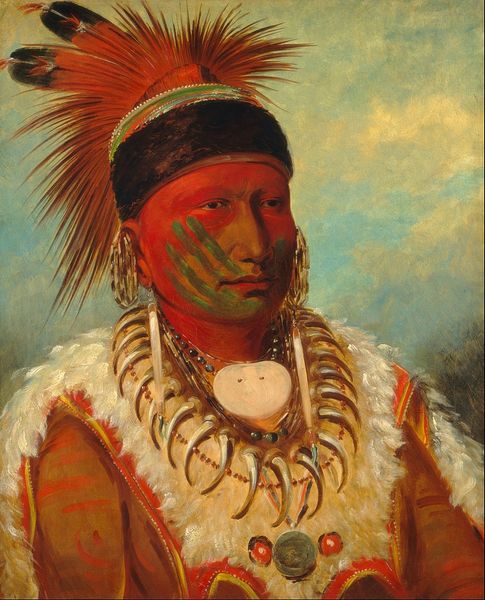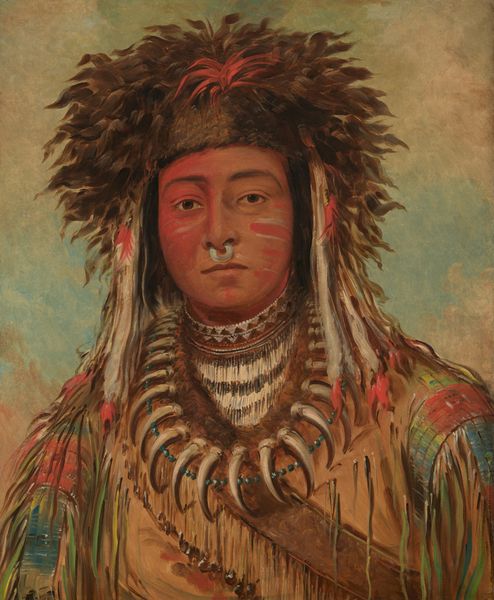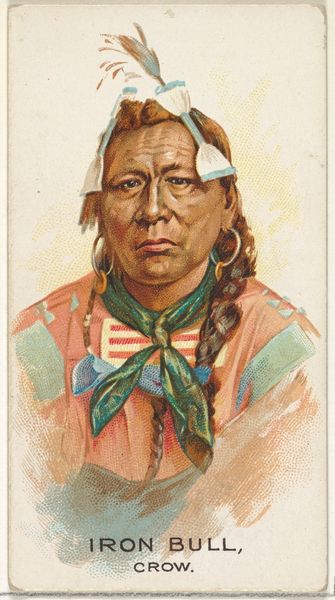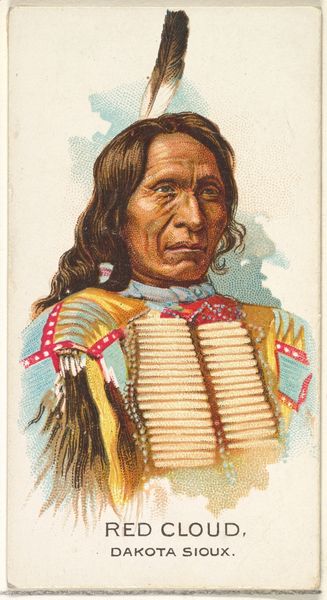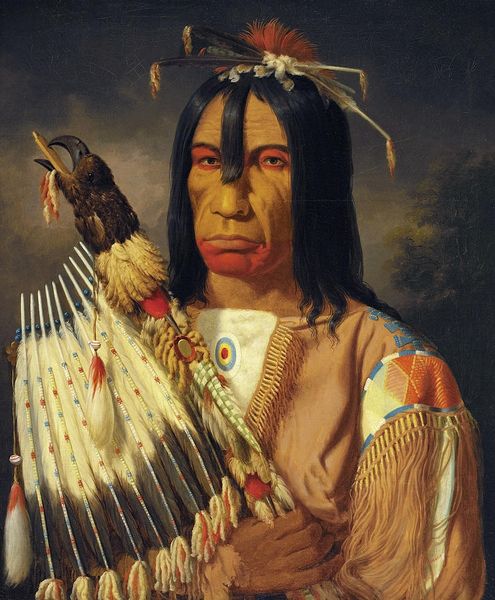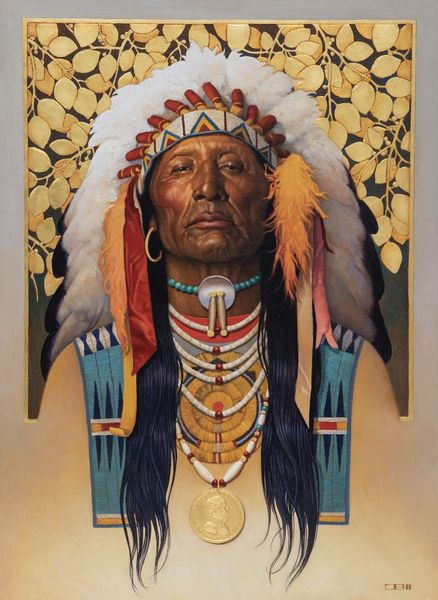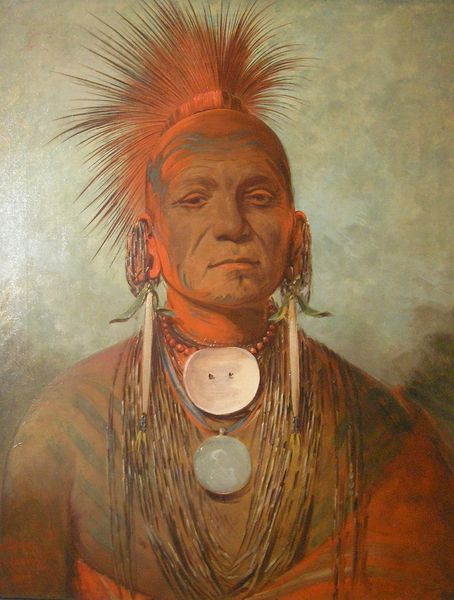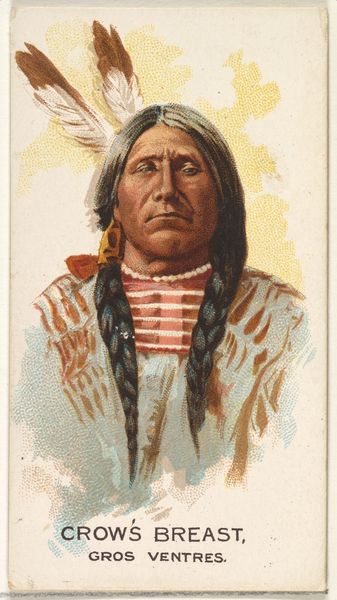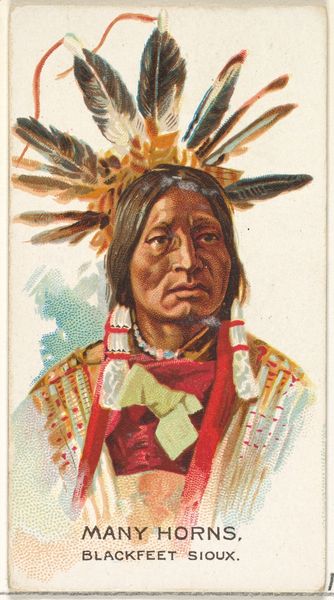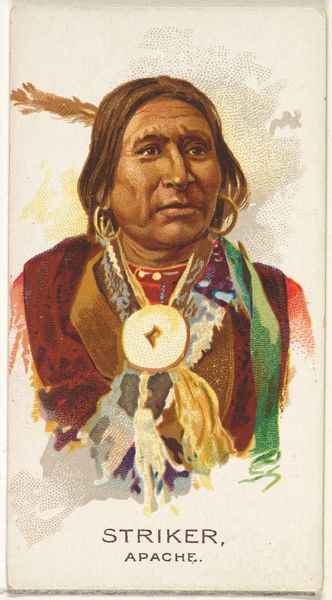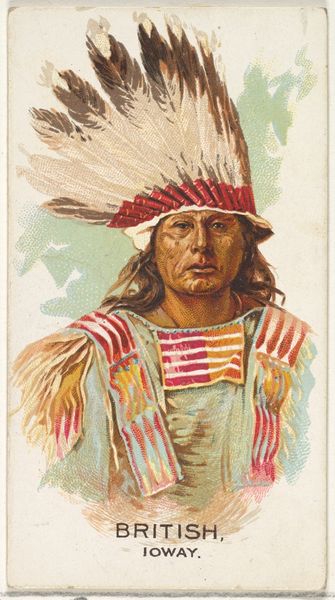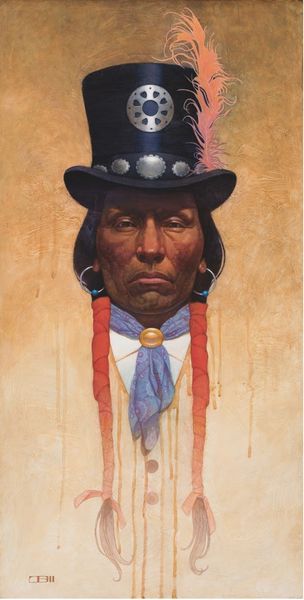
painting, oil-paint
#
portrait
#
painting
#
oil-paint
#
figuration
#
portrait reference
#
portrait head and shoulder
#
animal portrait
#
animal drawing portrait
#
portrait drawing
#
facial study
#
facial portrait
#
portrait art
#
fine art portrait
#
digital portrait
Dimensions: overall: 51 x 40.8 cm (20 1/16 x 16 1/16 in.) framed: 57.2 x 47 x 5.1 cm (22 1/2 x 18 1/2 x 2 in.)
Copyright: National Gallery of Art: CC0 1.0
Editor: This painting, "Plains Indian," is estimated to be from the 19th century, created using oil paint by J.W. Bradshaw. There’s a solemnity to this portrait, almost melancholic. What historical context informs the creation and reception of this piece? Curator: This work appears to engage with a genre of portraiture popular in the 19th century, coinciding with westward expansion and the often romantic, sometimes exploitative, depictions of Native Americans. Considering this, what visual cues point to how the artist, and perhaps the audience of the time, perceived the sitter? Editor: The feather, the clothing with geometric patterns... these feel symbolic. Curator: Precisely. Such details invoke specific notions of “Indianness.” The painting enters a larger visual economy, contributing to a collective understanding – or misunderstanding – of Indigenous identity. Who commissioned works like this, and how were they displayed and circulated? These factors shaped public opinion and policy toward Native communities. How do you think that influenced representations like this? Editor: I suppose, depending on where it was shown, it could have fueled existing prejudices or perpetuated stereotypes rather than offering any deeper understanding. Curator: Exactly. It served political purposes, shaping the narrative around Native populations during a period of conflict and dispossession. And it highlights the artist's role in contributing to or challenging these dynamics. This impacts its art historical legacy. Editor: So, analyzing its display context adds another layer to understanding its message. It makes you question its intent and impact, doesn’t it? Curator: Indeed. Art doesn't exist in a vacuum. Understanding its journey—creation, reception, institutionalization—helps us grapple with its complexities and legacies.
Comments
No comments
Be the first to comment and join the conversation on the ultimate creative platform.
